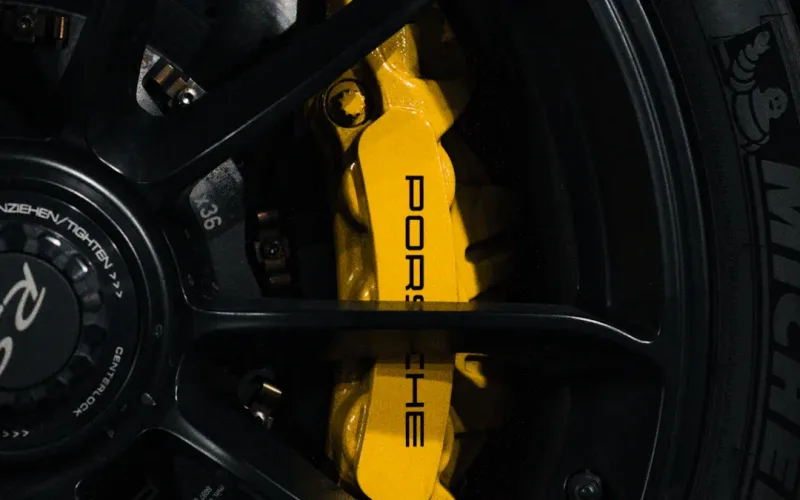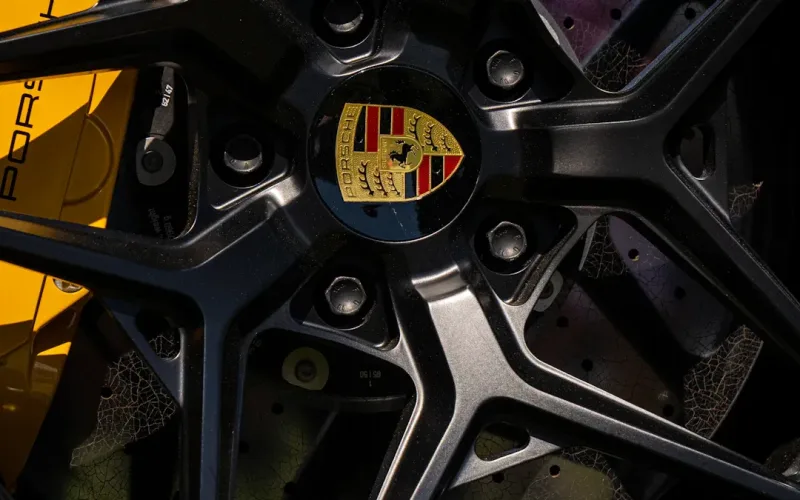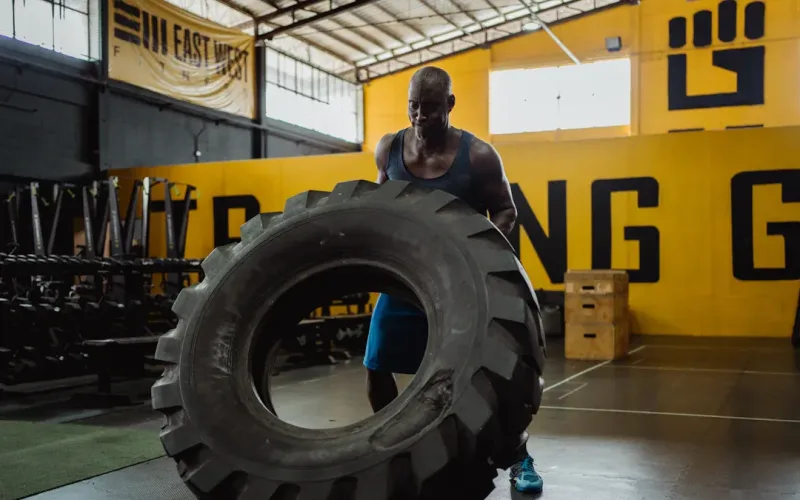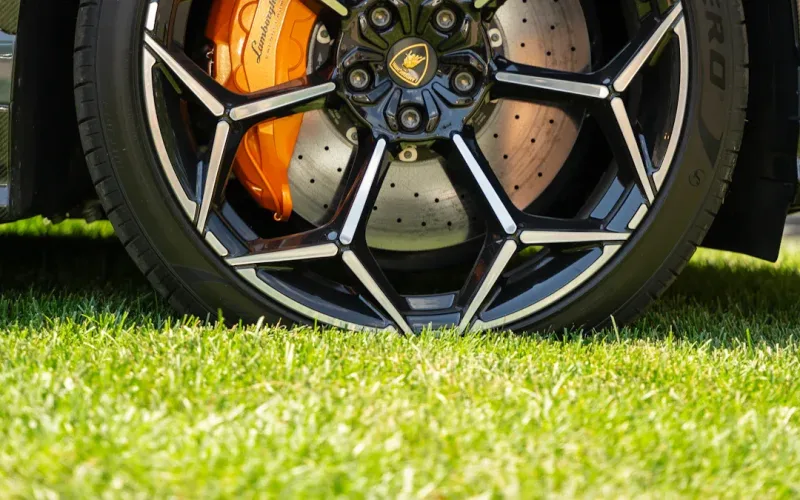

fortuneau
June 24, 2025
How Tire and Wheel Weight Impacts Fuel Economy and Ride Comfort
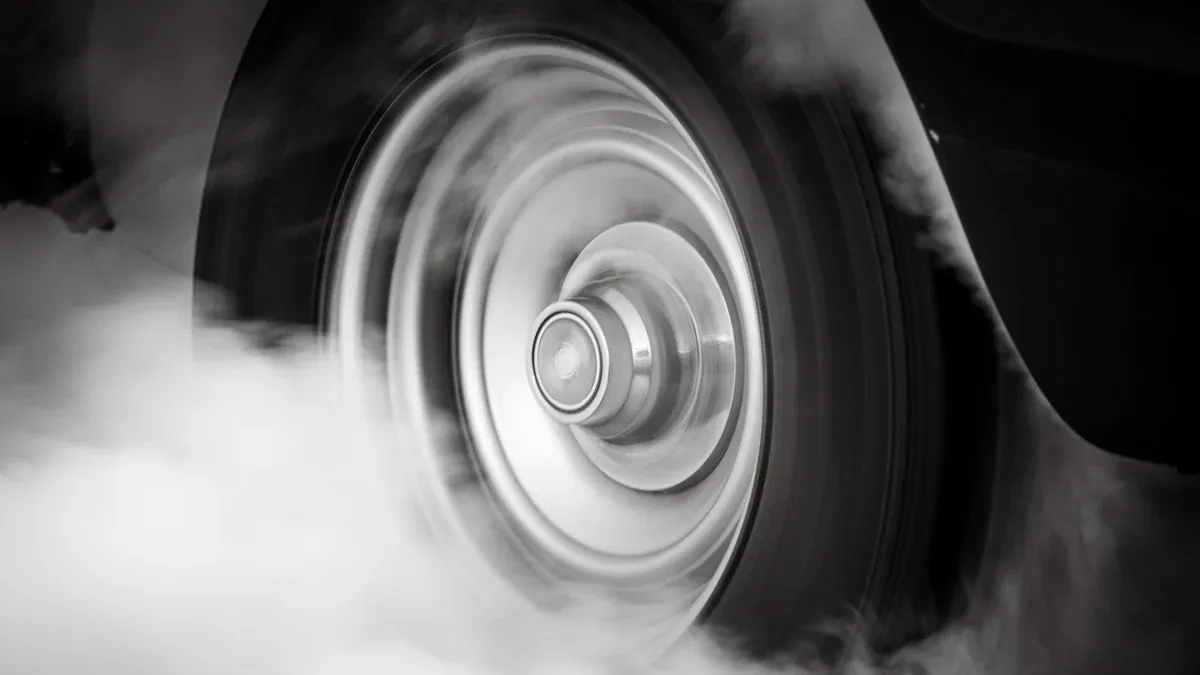
You might not realize how much tire and wheel weight can impact your daily drive. When you choose a heavier tire or wheel, your engine works harder to move your car, which increases fuel use and reduces comfort. For example, removing just one pound from each wheel tire weight can save as much energy as removing two pounds from the car itself. Lighter wheel tire weight allows your suspension to react faster, giving you a smoother ride and better fuel economy. Many drivers see a real difference in how their car feels and performs just by changing wheel tire weight.
The Science of Tire and Wheel Weight in Car Performance
Unsprung Weight and Its Role in Vehicle Performance
You might notice that your car feels smoother or rougher depending on the wheel tire weight. This happens because wheels and tires make up what experts call “unsprung weight.” Unsprung weight includes all parts not supported by your car’s suspension, such as the wheel, tire, and brake components. When you reduce unsprung weight, you help your vehicle’s suspension respond faster to bumps and dips. A study in the Journal of Sound and Vibration found that a 10% drop in unsprung mass leads to about a 6% improvement in ride comfort and handling. Using lighter wheels and tires, like aluminum or composite materials, can make your vehicle more comfortable and easier to control. Lower unsprung weight also means your car’s grip on the road improves, which boosts both safety and performance.
Rotational Mass and Acceleration
Wheel tire weight does more than affect comfort. It also changes how your vehicle accelerates. When you drive, your engine must spin the wheels and tires. Heavier wheels and tires have more rotational mass, which makes it harder for your car to speed up. Scientific tests show that removing 60 pounds from your rims and tires can make your car much quicker. In fact, one pound of rotational weight equals about eight pounds of regular vehicle mass when it comes to acceleration response. A test with a Mitsubishi EVO 9 proved that lighter wheels and tires help your car accelerate and decelerate faster. The data below shows how rotational inertia changes with gear stages:
| Gearbox Stage | Angular Acceleration (rad/s²) | Angular Deceleration (rad/s²) |
|---|---|---|
| First Gear | 0.0100 to 0.0163 | -0.2445 to -0.1858 |
| Second Gear | 0.0190 to 0.0251 | -0.2507 to -0.2475 |
| Third Gear | 0.0336 to 0.0395 | -0.3997 to -0.4026 |
| Fourth Gear | 1.1604 to 1.2037 | -0.6537 to -0.6624 |
| Neutral | 1.8918 to 2.0304 | -0.9135 to -1.1062 |
You get better acceleration and acceleration response with lighter wheel tire weight. Your car feels more lively and responsive, especially when you need to speed up quickly.
How Wheel Weight Affects Braking and Handling
Wheel tire weight also plays a big part in braking and handling. Heavier wheels increase the moment of inertia, which means your brakes must work harder to slow down your vehicle. This can lead to longer braking distance and less braking control. The relationship between wheel weight and braking force is clear in engineering formulas. For example, the braking force equation shows that heavier wheels reduce braking efficiency because they add to the rotational mass. Lighter wheels and tires help your car stop faster and give you more responsive handling. You also get better grip during sharp turns or sudden stops. Tests with different wheel and tire setups show that lighter wheels improve both fuel economy and vehicle responsiveness. You can see the effect of wheel weight on performance in the table below:
| Vehicle Configuration | Wheel & Tire Setup | Average Speed (mph) | Average Fuel Economy (mpg) |
|---|---|---|---|
| BMW 3 Series Original Equipment (16″) | Stock wheels and tires | 38.7 | 22.8 |
| BMW 3 Series Plus One (17″) Lightweight wheels | Lightweight aluminum alloy wheels with Plus One tires | 39.0 | 21.5 |
| BMW 3 Series Plus One (17″) Heavyweight wheels | Heavier aluminum alloy wheels with Plus One tires | 38.8 | 21.1 |
Choosing the right wheel tire weight helps you achieve better grip, shorter braking distance, and improved handling. Your vehicle becomes safer and more enjoyable to drive.
Tire and Wheel Weight and Fuel Economy

Why Heavier Wheels Increase Fuel Consumption
You may notice that your car uses more fuel when you install heavier wheels and tires. This happens because extra wheel tire weight makes your engine work harder. When you drive, your engine must move not only the car but also the wheels and tires. Heavier tires add more rolling resistance. This means the tires press harder against the road, causing more friction. Your engine must use more energy to overcome this friction, which leads to higher fuel consumption.
Studies show that the position of the weight matters. If the mass sits farther from the center of the wheel, it increases rotational inertia. This makes it even harder for your engine to spin the wheels. Heavier tires have a bigger effect on fuel economy than heavier wheels of the same weight. Wider tires or those with a larger diameter also increase rolling friction, which can lower your miles per gallon. Every time you speed up, slow down, or keep your car moving, your engine burns more fuel to handle the extra wheel tire weight.
City vs. Highway Driving and Energy Use
The impact of wheel tire weight changes depending on where you drive. In city driving, you often stop and start. Each time you accelerate, your engine must spin the heavy wheels and tires again. This uses a lot of energy. The effect of rotational inertia is strong in city traffic. Some drivers say that one pound of wheel weight can feel like adding ten pounds to your car because of how it affects acceleration.
Tip: If you drive mostly in the city, lighter wheels and tires can help you save more fuel.
In highway driving, you keep a steady speed most of the time. Your engine does not need to accelerate the wheels as often. The extra wheel tire weight does not affect fuel economy as much on the highway. However, if you use wider tires on larger wheels, you might see a small drop in fuel economy because of increased aerodynamic drag. Still, the biggest difference shows up in city driving, where stop-and-go traffic makes wheel tire weight matter more.
Here is a quick comparison:
- Heavier wheels and tires hurt fuel economy more in city driving because of frequent acceleration and deceleration.
- On the highway, the effect is smaller since you drive at a steady speed.
- Wider tires can slightly reduce highway fuel economy by increasing drag, but this is less important than the effect of rotational inertia in the city.
Lighter Wheels for Better Efficiency
Choosing lighter wheels and tires can make a real difference in your car’s efficiency. Tests show that switching to lightweight wheels can improve fuel economy by up to 8%. You may also notice less vibration and smoother acceleration. In some drag strip tests, cars with lighter wheels and tires accelerated 0.1 to 0.2 seconds faster. Reducing wheel tire weight by 10 to 12.5 pounds per corner can even increase your top speed by 1 to 2 mph.
A controlled test compared 20″ heavy wheels to 18″ lightweight wheels. The car with lightweight wheels used 27 fewer watt-hours per mile. This meant the car could drive about 12% farther on a full battery, or 37 extra miles. Acceleration times also improved by up to 0.2 seconds. These results show that lighter wheels and tires help your engine use less energy, giving you better fuel economy and performance.
If you drive a hybrid, using lightweight wheels on a hybrid can boost your efficiency even more. You get better acceleration, smoother rides, and more miles per gallon. By choosing the right wheel tire weight, you help your vehicle perform at its best while saving money on fuel.
Wheel Weight and Ride Comfort in Vehicle Performance
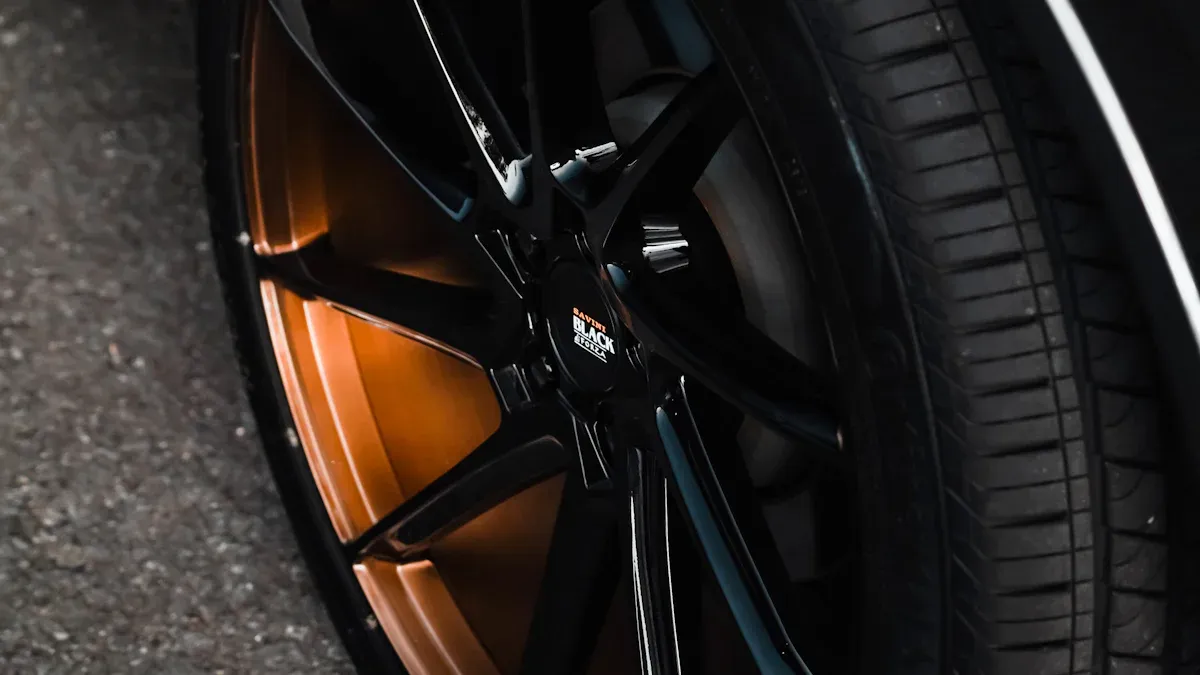
Suspension Response and Unsprung Weight
When you drive, your suspension works hard to keep your ride smooth. The weight of your wheels and tires, called unsprung weight, plays a big role in how well your suspension does its job. If you use lighter wheels and tires, your suspension can react faster to bumps and dips in the road. This means your car stays more stable, and you feel fewer jolts.
A real-world example shows this clearly. A driver switched from heavy steel wheels to lighter alloy wheels on a 1990 Miata. The change removed almost 10 pounds per wheel. After the switch, the ride felt much smoother, and steering became easier. The lighter wheels reduced the gyroscopic effect, so the car responded better to steering input. You get better handling and more comfort when you lower unsprung weight.
Experts like David Pook explain that heavier wheels increase unsprung mass. This extra mass sends more energy from bumps and potholes into your car’s body. Your suspension must work harder to control this energy, which can make your ride feel harsh. Lighter wheels and tires let your suspension absorb shocks better, improving both comfort and vehicle performance.
Vibration, Noise, and Road Feel
You notice vibration and noise most when you drive over rough roads. Wheel tire weight affects how much of this vibration reaches you inside the car. Lighter wheels and tires help your suspension control movement better. This means less vibration and less noise in the cabin.
- Real-world tests show that reducing wheel weight by about 12 pounds per corner improved a Mazda Miata’s acceleration time by 0.29 seconds. This also made the ride smoother.
- Many drivers report that switching to lighter wheels and tires reduces road noise and vibration. You feel less shaking, and the car sounds quieter.
- Lighter wheels mean your suspension has less mass to control. This reduces impact noise and keeps vibrations from reaching you.
- Handling and steering response improve with lighter wheels. You get a better feel for the road and more grip, which boosts vehicle performance.
- Professional tests on cars like the BMW 3 Series confirm these results. Lighter wheels and tires help your suspension work better, making your ride more comfortable.
Sometimes, very stiff lightweight wheels can increase road noise. However, most quality lightweight wheels improve ride quality by letting your suspension absorb bumps and reduce vibration.
Real-World Comfort Differences
You can see the impact of wheel tire weight on comfort in real-world studies. These studies measure how much a car bounces and shakes over bumps. Lighter wheels and tires produce lower vertical acceleration, which means you feel fewer jolts and less shaking.
- Lighter, flexible wheels and tires cushion your ride better than heavier, stiffer ones. You notice this most on rough roads.
- Drivers often say that heavier tires make rides feel stiff and uncomfortable, especially on city streets with potholes or speed bumps.
- Passengers feel less bouncing and fewer harsh impacts with lighter tires. Long trips become more comfortable.
- Lighter tires help your suspension absorb shocks more effectively. This leads to a smoother and quieter ride.
- Studies comparing different wheel setups found that heavier wheels increase vertical and pitch accelerations. This causes more bumps and jolts for you and your passengers.
- Lighter wheels show lower RMS values for vertical acceleration. You get a smoother ride, especially at low speeds.
- Your suspension reacts faster with lighter wheels. This keeps the tire in better contact with the road, improving grip and reducing vibration and shock.
Metrics like yaw velocity overshoot and lateral acceleration response time show how wheel tire weight affects ride smoothness and handling. Lighter wheels and tires improve both comfort and vehicle performance by reducing unsprung mass and allowing your suspension to respond quickly. When you choose the right wheel tire weight, you improve how your vehicle feels and impact how it drives every day.
Practical Choices for Tire and Wheel Weight and Car Performance
Balancing Comfort, Fuel Economy, and Performance
You want your vehicle to feel comfortable, save fuel, and perform well. Finding the right balance starts with your choice of tire and wheel. Lightweight wheels help your car accelerate faster and improve fuel economy. When you pair these wheels with energy-efficient tires, you get even better results. Many drivers notice smoother rides and better handling with this combination.
- Lightweight wheels on hybrid or efficient vehicles boost performance.
- Energy-efficient tires lower rolling resistance and save fuel.
- Combining both gives you a good balance between comfort and performance.
| Aspect Evaluated | Evidence Summary |
|---|---|
| Effect of Unsprung Mass Increase | More unsprung mass increases vibration and reduces ride comfort. |
| Road Test Validation | Tests show higher unsprung mass leads to more body vibration at higher speeds. |
| PID-Controlled Suspension | Advanced suspension systems can reduce the negative effects of heavy wheels and tires. |
| Conclusion | Lower unsprung mass improves comfort, but smart suspension can help if you need heavier wheels. |
Tips for Selecting the Right Wheels and Tires
Choosing the right tire and wheel for your vehicle keeps you safe and helps your car perform its best. Always check your owner’s manual for the correct size and type. Look at the sidewall of your tire for important numbers like size, load index, and speed rating. These numbers tell you how much weight your tire can carry and how fast it can go safely.
Tip: Use a tire selector tool to match your vehicle with the best tested tires.
| Aspect | Details & Recommendations |
|---|---|
| Tire Sidewall Reading | Match size, load index, and speed rating to your original tires. |
| Tire Types | Choose all-season, winter, or performance tires based on your driving needs. |
| Treadwear & Performance | Check treadwear grades and performance ratings from trusted sources. |
| EV Tires | Pick EV-specific tires for electric vehicles, or consider weather performance for regular tires. |
You should also think about your driving habits and the roads you use most. Higher speed-rated tires give you better braking and cornering. Special compounds in these tires help them last longer and stay safe at high speeds.
Common Mistakes to Avoid
Many drivers make mistakes when choosing or installing tire and wheel weights. These errors can hurt your car’s performance and safety.
- Skipping cleaning before applying adhesive weights
- Using the wrong type or size of weight
- Over-tightening or under-tightening wheel fasteners
- Ignoring regular checks for loose or corroded weights
- Failing to align weights during wheel balancing
If you make these mistakes, you might feel vibrations in your steering wheel or seat. Your tires could wear out unevenly, and you might hear strange noises while driving. Poorly balanced wheels can make your car harder to control, especially at high speeds or in wet conditions. Always check your wheels and tires regularly to keep your vehicle safe and running smoothly.
Fortune’s Expertise in Wheel Weights and Vehicle Performance
Quality Standards and Product Testing
You want wheel weights that last and perform well in every condition. Fortune uses strict quality management systems like ISO9001 to make sure every product meets high standards. You benefit from advanced quality control tests that check for durability, fit, and corrosion resistance. Fortune tests adhesive performance with methods such as the Floating Roller Peel Test for bond strength and Wet Peel Testing for humidity durability. The company also uses Bond Line Corrosion Resistance tests to ensure the weights resist salt and harsh environments. Lap Shear Testing checks adhesive strength in many conditions.
Fortune uses automation and precision engineering, including CNC-based spinning machines and real-time monitoring. These tools help create products with high accuracy and consistency. The company follows environmental rules like the EU RoHS Directive and US EPA standards. You get wheel weights made from safe, non-lead materials such as zinc and steel. Fortune also uses sustainable practices, including Life Cycle Assessment and non-destructive testing, to reduce environmental impact and assure quality.
| Test Type | Description |
|---|---|
| Hardness Values | Measures resistance to wear and tear, ranging from 6 to 11.5 BHN. |
| High-Temperature Resistance | Ensures adhesive stays strong in hot climates. |
| Thermal Shock Resistance | Confirms weights withstand sudden temperature changes. |
| Peel Testing | Checks how well adhesive sticks to different wheel surfaces. |
| Bond Testing | Evaluates long-term adhesive strength. |
| Fatigue Testing | Tests durability under repeated stress. |
Supporting Global Customers with Reliable Solutions
You can rely on Fortune for support wherever you are. The company has warehouses and offices in North America, making it easy to serve customers worldwide. Fortune’s team of over thirty engineers works to develop new products and improve existing ones. You receive products that fit your needs, whether you work with OEMs or need aftermarket solutions. Fortune participates in international exhibitions, staying up to date with the latest trends and customer requirements. The company monitors every step of production, from design to packaging, to ensure you get reliable and accurate products.
Fortune’s global presence means you always have access to premium wheel weights and expert support, no matter where you drive.
Commitment to Customer Satisfaction
You come first at Fortune. The company follows the motto “customer first, quality first.” Every product goes through strict inspection before shipment. Fortune checks the quantity and packaging to make sure you get exactly what you ordered. The team listens to your feedback and works closely with you to meet your needs. Fortune’s dedication to quality and service has helped build strong relationships with customers around the world. When you choose Fortune, you choose a partner committed to your satisfaction and safety.
You can see how tire and wheel weight can impact your driving experience every day. Studies show that even small changes in rolling resistance can change fuel use by 1 to 2 percent. Over the years, engineers have lowered rolling resistance to help you save fuel. You also get better comfort and safety when you choose tires with the right balance of traction and efficiency. When you pick lighter, well-designed wheels and tires, you make your car smoother and more efficient.
FAQ
What is unsprung weight, and why does it matter?
Unsprung weight includes your wheels, tires, and brakes. You want less unsprung weight because it helps your suspension work better. Lower unsprung weight gives you a smoother ride and better handling, especially on rough roads.
How much can lighter wheels improve fuel economy?
You can see up to 8% better fuel economy by switching to lighter wheels. Tests show that removing 10 pounds from each wheel can save you fuel, especially if you drive in the city with lots of stops and starts.
Do heavier wheels affect braking distance?
Yes, heavier wheels make your brakes work harder. You may notice longer stopping distances. Lighter wheels help your car stop faster and give you more control during sudden stops.
Can I use any wheel weight for my car?
Always use wheel weights that match your car’s specifications. The wrong size or type can cause vibration, uneven tire wear, or even damage. Check your owner’s manual or ask a professional for the right fit.
